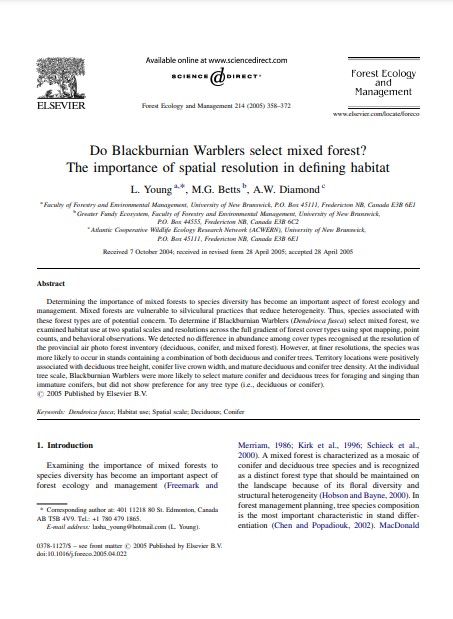Do Blackburnian Warblers select mixed forest? The importance of spatial resolution in defining habitat
Bosque Modelo:
Fundy
Temática:
Gestión forestal
Tipo de documento:
Artículo científico
Resumen
Determining the importance of mixed forests to species diversity has become an important aspect of forest ecology and management. Mixed forests are vulnerable to silviculural practices that reduce heterogeneity. Thus, species associated with these forest types are of potential concern. To determine if Blackburnian Warblers (Dendrioca fusca) select mixed forest, we examined habitat use at two spatial scales and resolutions across the full gradient of forest cover types using spot mapping, point counts, and behavioral observations. We detected no difference in abundance among cover types recognised at the resolution of the provincial air photo forest inventory (deciduous, conifer, and mixed forest). However, at finer resolutions, the species was more likely to occur in stands containing a combination of both deciduous and conifer trees. Territory locations were positively associated with deciduous tree height, conifer live crown width, and mature deciduous and conifer tree density. At the individual tree scale, Blackburnian Warblers were more likely to select mature conifer and deciduous trees for foraging and singing than immature conifers, but did not show preference for any tree type (i.e., deciduous or conifer).
Información Bibliográfica
Autor:
Young, L, MG Betts and AW Diamond.
Revista:
Forest Ecology and Management
Año:
2005
N°:
-
País :
Canadá
Páginas:
358 - 372
Volumen:
214
Idioma:
Ingles
Palabras claves
Dendroica fusca; Habitat use; Spatial scale; Deciduous; Conifer





